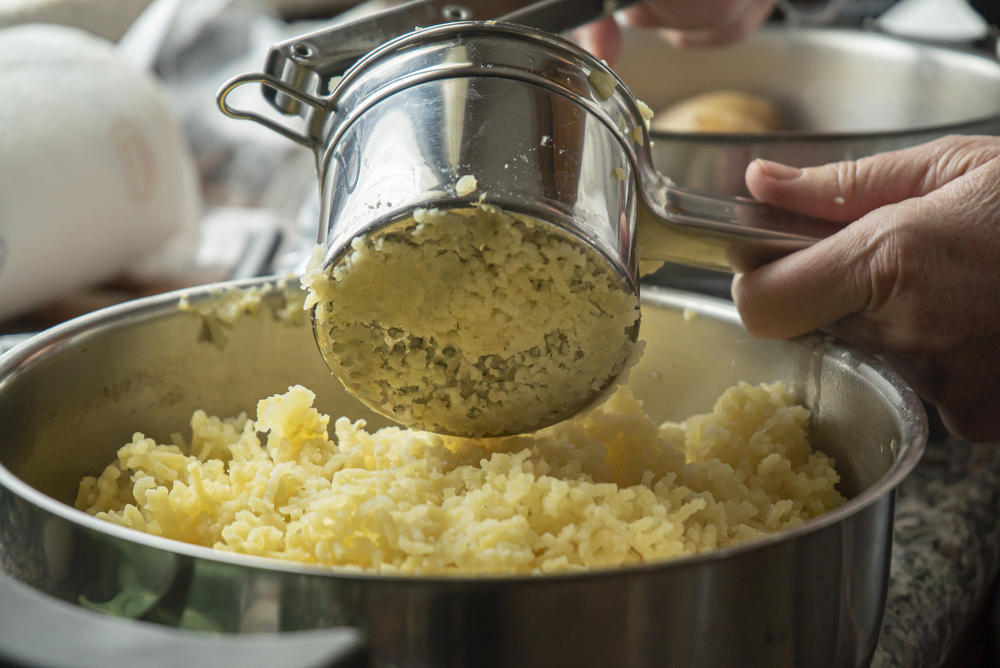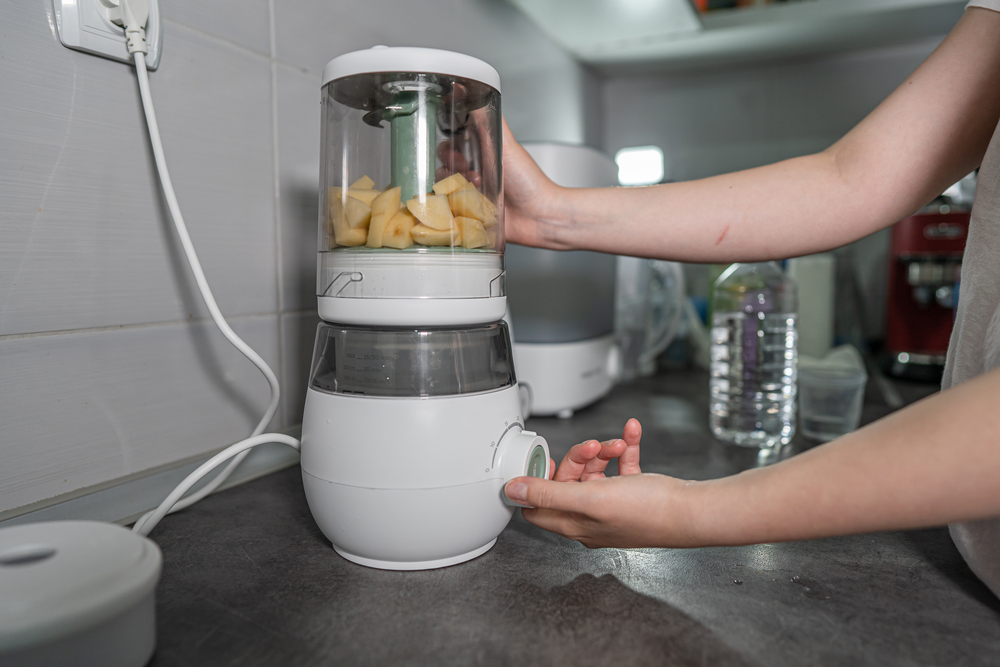While mashing potatoes without a masher may sound bizarre, it is certainly something you can do, and it will prove to be a lot easier than you anticipated.
Without a doubt, mashed potatoes are still extremely popular, and the majority of folks will need a masher to achieve their desired results. However, there are more ways to mash potatoes than people realise, and that is what we are going to look at here.
Now, the outcome of your mashed potatoes will differ depending on the technique you employ. The problem with a potato masher is it can sometimes lead to rather lumpy mashed potatoes, and not everyone enjoys that.
So, the different methods we will look at may result in different types of mashed potatoes, but that’s not always a bad thing.
Before Starting
We are going to presume you have already cooked potatoes, and you just want to know how to get chunk-free mashed potatoes or creamy mashed potatoes. All we suggest is making sure your boiled potatoes are of a variety that is actually mashing potatoes, as that does influence the result.
So, everything we are talking about is when you have finished cooking the potatoes, you have been able to drain them, and you are ready for the next step.
Method 1: The Potato Ricer

The first method to produce mashed potatoes is to use a potato ricer. This is a fantastic way to deal with potatoes without a masher, and there will be no lumps in this method.
Once you have boiled your potatoes, place them in the ricer and squeeze the handle down. The mash comes out of the tiny holes in the ricer, and it does mean there will be no lumps. You also do not have to peel the potatoes, as the ricer will catch the skin, and you simply need to empty it out.
Method 2: The Food Processor
Another method is to use a food processor, and this will undoubtedly produce good mashed potatoes in next to no time. All you need to do is to get those drained potatoes and put them into the processor. Give them a blast, and you will get mashed potatoes that are smooth and also lump-free. This literally takes seconds to do, and the end results you will get will be very consistent.
Method 3: Electric Hand Mixer
Something else to consider is an electric hand mixer. This can create a bit more mess if you are not careful, but as long as you have a large enough bowl, then it shouldn’t be much of a problem.
An electric hand mixer will not take long to mash potatoes. However, be aware that this can still make them slightly lumpy, so if that’s not what you are looking for, this may not be the best approach when you want to mash potatoes without a masher.
Method 4: Food Mill
Another option is to use a food mill, and while it does look like a potato ricer, there is a slight difference.
With a food mill, it doesn’t just force the potato through like the ricer. Instead, it actually whirls the potato around until the force and pressure send it through the holes. This is a fantastic way to mash potatoes without a masher, simply because it is so quick and it makes everything so smooth.
Method 5: A Sturdy Whisk

While some people may not wish to use any electrical appliances, that doesn’t mean you have to go ahead and opt for using a large fork to produce mashed potatoes. Instead, a strong whisk can do just as good a job.
This method will clearly involve a bit more work on your part, and it does take some power to get the desired end result, but there’s no doubt that it will work.
Method 6: A Stand Mixer
When you don’t want to use a hand mixer, the final option is to use a stand mixer. This may not be your first choice, but it will work just as well as any other electric mixer. However, be aware that it does seem to incorporate more starch into your potatoes, but they should still end up rather creamy if you incorporate some butter into the mix.
Tips On Getting Fluffy Mashed Potatoes
And that’s how to make mashed potato without a masher at hand! But how do you manage to get mashed potatoes that are nice and fluffy? Well, they are not fluffy due to the amount of time you take to mash them. Too much time leads to more starch being broken down and getting into the potatoes. That means they will not be as light as you can get them, and it can pretty much ruin your meal.
Getting Different Types of Mash Potatoes
The methods mentioned above will all produce slightly different types of mashed potatoes. They can range from light and fluffy to dense and creamy. However, there’s a good way of remembering which one will produce the best end results for your disk.
If you want creamy potatoes, then we recommend going for the electric mixer. The way it breaks down the potatoes leads to the result, and it’s something you won’t be able to really achieve with a hand masher.
If you want something that is lighter, then you want to use the ricer or mill method. This is due to the downward pressure being applied to the potato, and the way it forces it through those small holes also adds to the light nature. Don’t then ruin this by adding lots of creams or losing some of the texture.
A Note on Potatoes
We should also add a quick word on the potatoes themselves. Different types are better for different end results, so be aware of this before you start cooking. This is all due to the starch and the way the potato cells are held together, as this influences the way in which you can get the correct texture for your mashed potato.
Most supermarkets will now mention on the bag what the potatoes are best for. This is not just a marketing thing, but it’s actually there to make a difference and to help. Pay attention to this information, as the texture you can achieve will be different, and it will completely change what you think about the recipe.
Why These Methods are Better
The problem with mashing by hand is that it’s time-consuming. You need to get all of the ingredients, then stand there mashing, and before you know it, your potato is cold, and it just doesn’t taste nice.

But making mashed potatoes without a masher is not only faster, but it produces a better texture and consistency as an end result. Some of the methods mentioned above will produce such a smooth mash that you won’t believe it’s even possible. At the same time, if you want a sticky mashed potato, then the electric mixer or food processor will work well.
The good thing is most people have these types of utensils in their kitchen. So, you simply need to look at your recipe and decide if you need chunky, smooth, or whipped potatoes befitting of those dishes.
No Masher, no Problem!
And that is how to make mashed potato without a masher: as you can see, there are several options available to you. It all depends on the tools you have available and how smooth you want your mashed potatoes to be. Not having a masher shouldn’t be a problem anymore: all you need to do is work out what you want to include in those fluffy potatoes to give them some extra taste.

